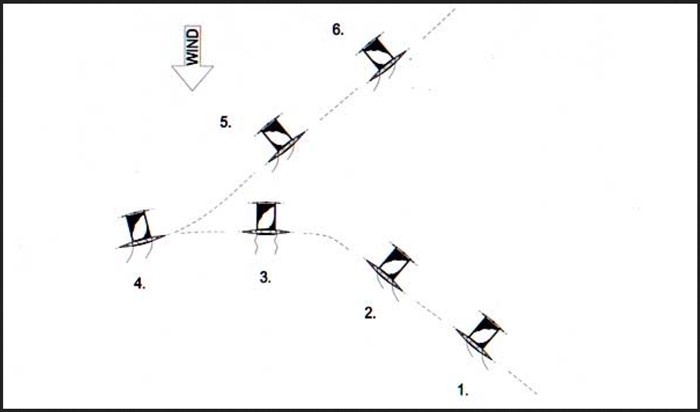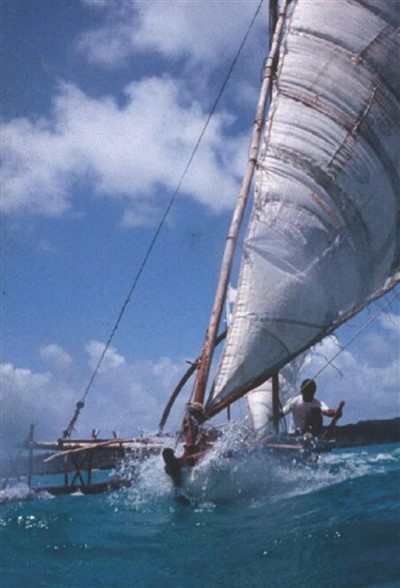“Sail, the historic implement of world exploration, has within itself many new horizons that beckon for pursuit, but you have to be willing to venture past charted waters.” – Gary Hoyt

Micronesian communities have a long (and almost lost) tradition of fast asymmetrical multihull sailboats (generally referred to as proa, or in french, prao), upon which both local and long distance ocean journeys were undertaken. These boats were recognized by the early European navigators as being much faster than European designs, but the principles of their design and operation were quite orthogonal to European methods.
Orthogonal is a project to build a modern proa, exploiting some of the special qualities of traditional proas – such as lateral asymmetry and shunting – while using modern materials. Orthogonal is a transdisciplinary research project involving anthropology, hydrodynamics and aerodynamics, design prototyping, experimental structures and materials science, traditional and contemporary artisanal practices, sustainability and ‘critical technical practice’ (Agre).
It has been said that the multihull community is the lunatic fringe of the sailing community and the proa community is the lunatic fringe of the multihull community. The sailing community tends to be conservative. The first western catamaran, Amaryllis, designed by the great naval architect Nathanael Herreshoff, won the 1876 New York Centennial Regatta. As a result, multihulls were banned. Dick Newicks’s Cheers, the first ‘atlantic’ proa, came third in the 1968 OSTAR solo transatlantic race, against boats three times it’s size. Atlantic proas became unfashionable when several successive designs were wrecked.
“For me proas represent an alternate reality to mainstream sailing. They trade transverse symmetry for fore & aft symmetry and in doing so enter a different world of possibilities and constraints.” Paul Bieker. (Naval architect and engineering, member of Team Oracle USA.)
While the Orthogonal project is not unique, most modern proas are of the ‘pacific’ kind. Only a handful of boats of atlantic proas exist internationally (each of which is a unique design). Virtually every aspect of Orthogonal design is novel and experimental. The most basic design issue is the question of received wisdom in naval architecture. The contemporary Bermudan sloop is the epitome of a century of design refinement of the tacking displacement monohull. Optimal design for a shunting, light displacement asymmetrical multihull is likely to be quite different.
Orthogonal is a platform for prototyping new approaches to sailcraft design. The design process for Orthogonal has been underway since spring 2014. Currently (Mar 2016) we are building a 25% radio control scale model.
The Orthogonal team is grateful for the in kind support of the Dean of the Claire Trevor School of the Arts (providing space for building Orthogonal) and to the CALIT2/UROP Multidisciplinary Design Projects program which has afforded a structure in which students can work on the project, along with a small budget. Professor Penny is also grateful to UCI CORCL for a small grant towards the project.




